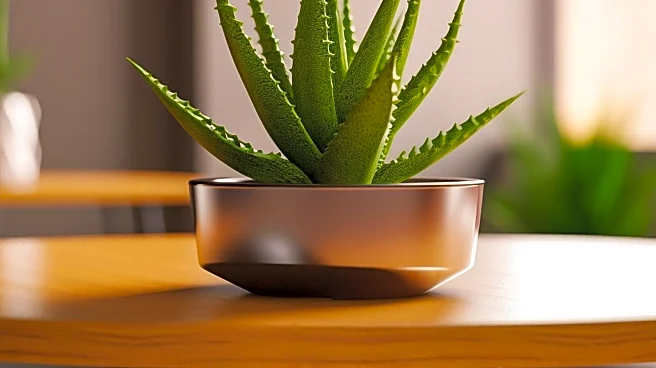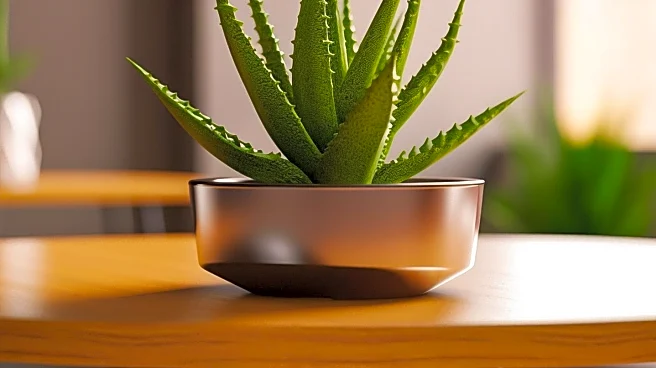What's Happening?
A recent study conducted by Stanford University has explored the impact of indoor plants on mental health and productivity. The research, led by Eva Bianchi, developed a tool called Nature View Potential
to measure the optimal amount of greenery visible in indoor spaces. The study involved 412 participants who were assigned to digital conference rooms with varying levels of plant coverage. Results indicated that a room with approximately 20% greenery provided the most significant boost in perceived restoration and sense of belonging. However, rooms with excessive greenery, around 60%, led to increased stress levels among participants, contradicting previous assumptions about the calming effects of plants.
Why It's Important?
The findings of this study have implications for various settings, including offices, classrooms, hospitals, and assisted living facilities. Indoor plants have been shown to enhance productivity, reduce stress, and improve mental health outcomes. The research suggests that while some greenery is beneficial, too much can be overwhelming and counterproductive. This insight is crucial for designers and architects aiming to create environments that promote well-being. The study highlights the importance of not only incorporating plants but also ensuring occupants feel connected to them to maximize benefits.
What's Next?
The Nature View Potential tool developed by Stanford researchers could become a valuable resource for designers seeking to optimize indoor environments. By fine-tuning the amount of greenery in spaces, designers can create more comfortable and calming atmospheres. The study's findings may lead to changes in how indoor spaces are designed, particularly in workplaces and educational settings, where productivity and mental health are priorities. Further research may explore the specific types of plants that contribute most effectively to well-being.
Beyond the Headlines
The study raises questions about the psychological effects of indoor environments and the balance between nature and human-made spaces. It suggests a cultural shift towards valuing not just the presence of nature but the quality of interaction with it. This could influence future architectural trends and the integration of biophilic design principles, which emphasize the connection between humans and nature.











